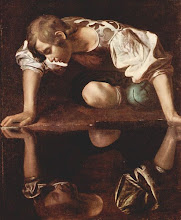In the first decade of the century, Hendrik van Balen painted Pluto and Persephone, which is now in the Brighton Museum and Art Gallery.

Bernini's 1621-1622 statue of Pluto and Proserpina is now in Rome's Galleria Borghese. (public domain image from Museum Syndicate)

Rembrandt painted the above Rape of Persephone in 1631, which is Berlin's Gemäldegalerie, but does not appear to be on their website.

Pignoni's 1650 above L'Enlèvement de Proserpine is now in Nancy's Musée des Beaux-Arts.

In the early 1680s Giordano painted a series of oil studies or modelli which are now in London's National Gallery. These were preparation for a series of frescoes in Florence's Palazzo Medici Riccardi, one of which, showing the rape of Proserpina, is shown above.

Turning to the theme of Persephone in the underworld, the above detail from a 1622 picture of Hell by François de Nomé. The complete picture is now in Besançon's Musée des Beaux-Arts et d'Archéologie.(image used under creative commons licence, courtesy of baroque-in-art.org) Paris's Louvre has a painting of Orpheus before Pluto and Persephone by Perrier and dating from 1647-1650. (unless otherwise ascribed, all images in this post are in the public domain and come from wikicommons)
To finish this look at Persephone in the 17th century here is an extract from the overture to Lully's opera Proserpina. YouTube also has extracts from Act III amongst the related videos.





No comments:
Post a Comment